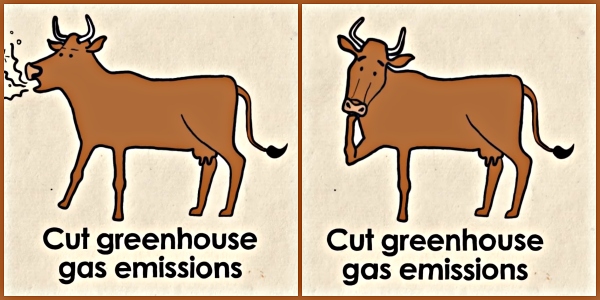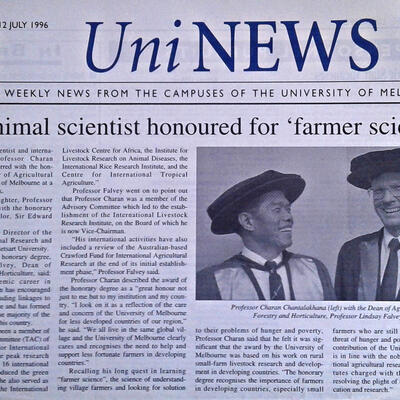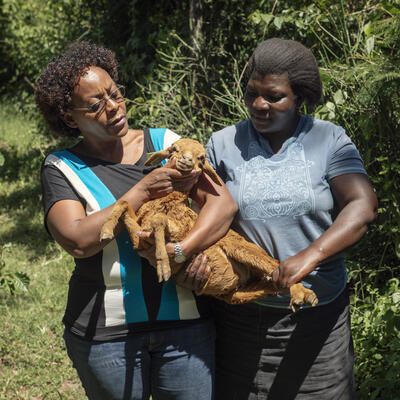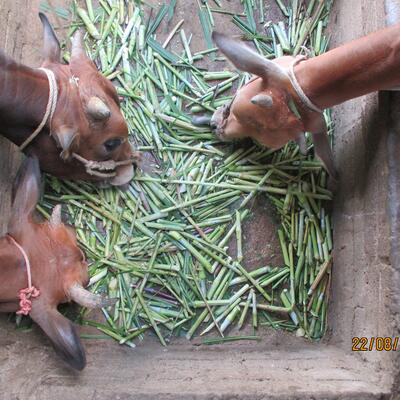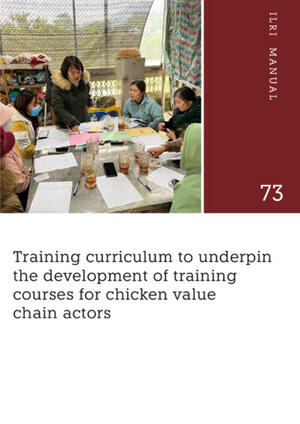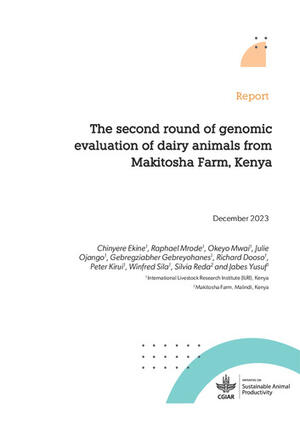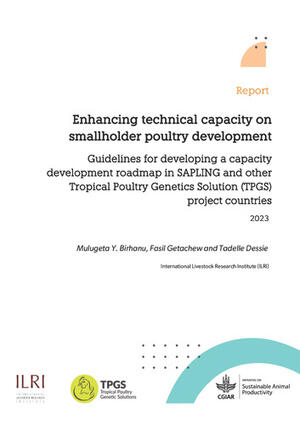
In pursuit of low-emissions cows—ILRI’s Jimmy Smith and John Goopy on transforming ‘idling’ cows to climate-smart animals ‘zooming down the highway’
Graphic by the Global Livestock Alliance.
Researchers are on the hunt for a cow that produces less methane, one of the major contributors to climate change. If and when those green genes can be easily isolated, they could be spread throughout global cattle populations.
‘The livestock sector accounts for an estimated 14.5 percent of human-related greenhouse gas emissions globally, with about 44 percent of those emissions in the form of methane, according to the U.N.’s Food and Agriculture Organization. Methane is a byproduct of livestock digestion and manure emissions, among other sources. Cattle account for the majority of the sector’s contributions, adding to about 65 percent of emissions.
‘While methane has a shorter lifetime in the atmosphere than carbon dioxide, it is more effective at trapping radiation. This makes its impact over a 100-year period more than 25 times greater than carbon dioxide, according to the U.S. Environmental Protection Agency.
‘Scientists see urgency in addressing methane emissions now. Rates are slated to rise rapidly as developing economies grow. Lifestyle and diet changes, coupled with population growth, are expected to more than double the demand for animal-based products by 2030, according to the FAO.
‘Changing consumption may prove impossible, so internationally, researchers have been working on changing the cow. A newly created collaboration led by the Global Research Alliance on Agricultural Greenhouse Gases is one of the latest efforts. It will work to study the microbial communities of the stomachs of cattle, hoping to identify those with lower methane emissions. The sampling is expected to take place in countries including Australia, Denmark, Scotland, Uruguay, and Brazil, but the extent of the partnerships has not been finalized. If and when favorable genes can be easily isolated, the long-term aim will be to provide farmers with the tools to integrate this trait into its breeding programs for cattle.
“We are in the early days of conceptualizing and doing this research,” said Jimmy Smith, director general of the Nairobi-based International Livestock Research Institute. “Looking for this low-emissions cow is one of the long-term dreams I have.”
‘A climate-friendlier animal may be available to farmers in a few years in developed countries such as New Zealand, but it could be decades before the developing world sees these breeding gains. In the meantime, development agencies, governments, and farmers are pushing to increase the productivity of livestock, which also helps mitigate methane emissions. . . .
‘When the right characteristics are identified, a low methane-emitting cow could potentially be found using a mouth swab — a technique easy enough to be used to identify the large quantities needed to have a successful breeding program. The project aims to develop a tool to identify the lowest emitters in any herd or flock, so that those traits can be prioritized in any breeding effort if desired using existing gene pools. . . .
‘Selecting animals with lower methane byproducts could reduce emissions by up to 5 percent, but this percentage could rise to 10 or 20 percent if it becomes a breeding objective over several decades, according to the Global Alliance for Climate-Smart Agriculture. . . .
‘If researchers succeed in pinpointing lower-emission cattle, farmers would have the option to purchase the semen of low-emitting cattle. . . .
‘A low-emissions cow populating pastures in the developing world in the near future might be a pipe dream, said John Goopy, research scientist in livestock greenhouse gas measurement and mitigation at the International Livestock Research Institute in Nairobi, Kenya.
Advanced breeding schemes are scarce in the developing world, where breeding is generally more random, he said. . . . Because of this, it is more practical to push to increase the productivity of existing livestock, which in turn will reduce emissions.
In the developing world, there are huge gains to be made in increasing productivity in the livestock sector, which is where the research at ILRI focuses.
Some 80 percent of farmland in sub-Saharan Africa and Asia is managed by small scale farmers, which tend to operate with lower productivity, meaning fewer liters of milk produced as compared to countries like the United States, said Smith of ILRI.
Bringing highly productive breeds of livestock, such as the Holstein Friesian cattle, to developing countries is a tactic that has been used to increase productivity. But these temperate environment animals don’t thrive in the hot, humid tropics, which is where the majority of beef and dairy cattle are located. As a result, the approach by organizations like the ILRI has pivoted to cross-breeding among local genotypes, looking for improved performance.
‘In August for example, a $12.6 million public-private development partnership was announced to improve milk yields per cow by at least 50 percent to 100 percent for 30,000 Kenyan dairy farmers. . . . Part of the program will include training on artificial insemination for cross-breeding local cows with the genes of cows that produce more milk. The project will also use climate-smart forage species for feed, including Brachiaria or “signalgrass,” which is a “carbon sink,” absorbing carbon dioxide from the atmosphere.’
“If an animal that produces two liters [of milk] now, can produce 10 liters in the future, it means that the emissions per unit of product goes down significantly,” said Smith.
When a cow is emitting large quantities of methane just to maintain itself rather than producing milk, it’s comparable to letting a car idle, Goopy said. Fumes are emitted but no distance was traveled.
“Ideally, you want to be zooming down the highway,” he said.
Read the whole article by Sara Jerving in Devex: The pursuit of a low-emissions cow, 17 Oct 2017.






